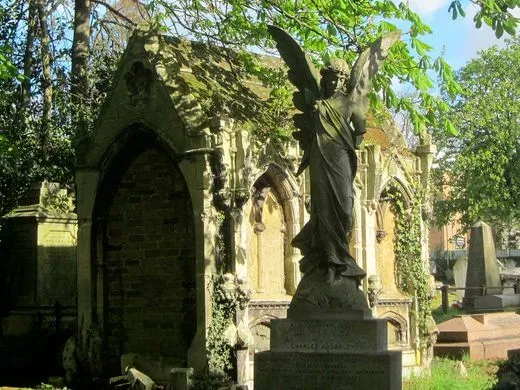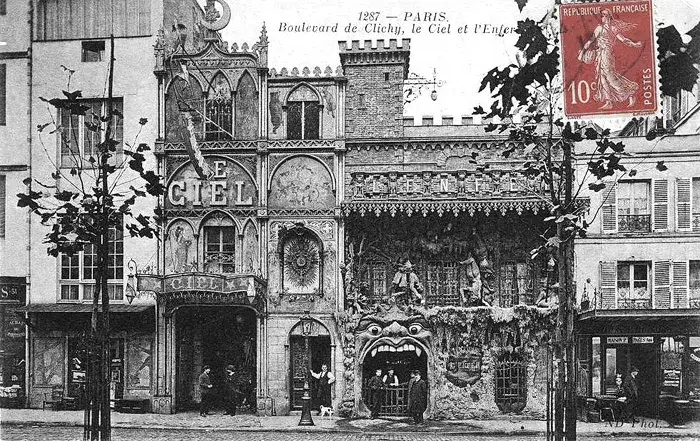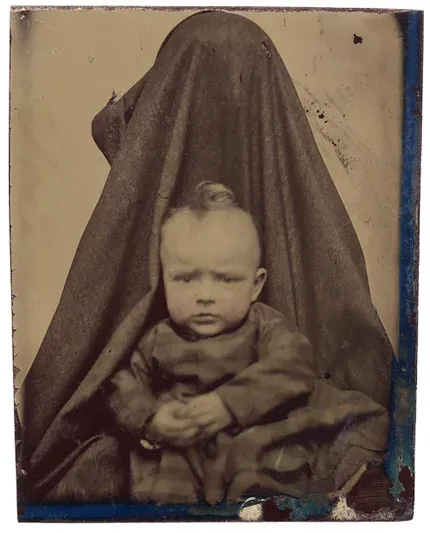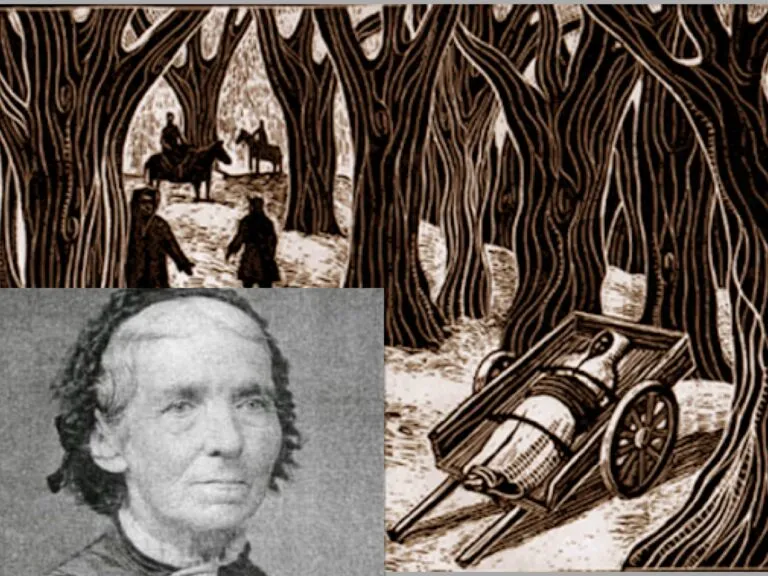Kensal Green Cemetery
Kensal Green Cemetery: A Journey through the History and Architecture of the Victorian Cemetery
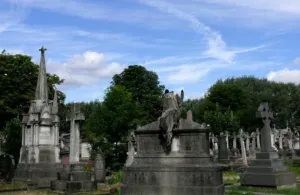 Kensal Green Cemetery, located in northwest London, is one of the most historic and architecturally significant cemeteries in the British capital. Founded in 1832, this cemetery played a crucial role in the funerary history of London and continues to be a place of great cultural and historical importance, becoming part of the Magnificent Seven. This article explores in detail the history, architecture, sculptures, and notable figures buried at Kensal Green, offering an in-depth look at this fascinating historical site.
Kensal Green Cemetery, located in northwest London, is one of the most historic and architecturally significant cemeteries in the British capital. Founded in 1832, this cemetery played a crucial role in the funerary history of London and continues to be a place of great cultural and historical importance, becoming part of the Magnificent Seven. This article explores in detail the history, architecture, sculptures, and notable figures buried at Kensal Green, offering an in-depth look at this fascinating historical site.
History and Foundation
Kensal Green Cemetery, officially known as “Kensal Green Cemetery and Crematorium,” was inaugurated on July 26, 1832, as one of the first suburban cemeteries in London, created to address the growing population and lack of space in central urban cemeteries. The cemetery was designed by architect William Tite, who was commissioned to create a burial area that reflected the aesthetic and philosophical trends of the time. Kensal Green was the first of the seven cemeteries that make up the famous “Magnificent Seven,” a group of Victorian cemeteries that also includes Highgate, Brompton, Abney Park, Nunhead, West Norwood, and Tower Hamlets.
The cemetery was conceived as a garden of burial, with large green spaces and a landscaped layout aimed at creating an atmosphere of tranquility and reflection. The architecture and design of the cemetery reflect the romantic trends of the time, with Gothic and neoclassical influences evident in the tombs and monuments.
Architecture and Sculptures of Kensal Green Cemetery
Kensal Green Cemetery is known for its remarkable architecture and sculptures. The cemetery houses a wide range of monumental tombs and mausoleums, many of which were designed by prominent architects and sculptors of the time. The variety of architectural styles and sculptures present in the cemetery offers a fascinating glimpse into the artistic and cultural trends of the 19th century.
Mausoleums and Monuments
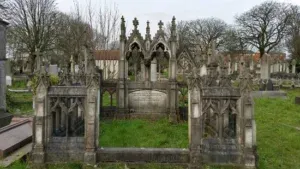 Among the most notable monuments in the cemetery are the mausoleums of aristocratic families and prominent figures. The mausoleums are often decorated with Gothic, neoclassical, and Renaissance elements, characterized by refined architectural details and ornamental sculptures. These mausoleums testify to the grandeur and importance of the deceased and offer a glimpse into their lives and achievements.
Among the most notable monuments in the cemetery are the mausoleums of aristocratic families and prominent figures. The mausoleums are often decorated with Gothic, neoclassical, and Renaissance elements, characterized by refined architectural details and ornamental sculptures. These mausoleums testify to the grandeur and importance of the deceased and offer a glimpse into their lives and achievements.
Sculptures
The sculptures at Kensal Green are particularly significant. Many of the monuments are adorned with sculptures of angels, crosses, and other religious and symbolic figures. The sculptures represent a mix of styles and influences, with works ranging from realism to stylization. The sculptural figures are often crafted with great attention to detail, offering an artistic representation of mourning and memory.
Famous Figures and Notable Burials
Kensal Green Cemetery is home to the graves of many famous and influential figures in British history. Among the most notable burials are:
- Isambard Kingdom Brunel (1806-1859): A highly important British engineer and designer, known for his innovative work in the fields of railways and navigation. Brunel was a key figure in the British Industrial Revolution and designed many important infrastructures, including the Great Western Railway and the Great Eastern.
- Thomas Lord (1755-1832): Founder of Lord’s Cricket Ground, one of the most prestigious cricket stadiums in the world. Thomas Lord was a central figure in the development of cricket as a sport, and his legacy continues to be celebrated in the world of sports.
- Charles Babbage (1791-1871): A British mathematician and inventor, considered the “father of the computer” for his pioneering work on the analytical engine, a precursor to modern computers. His inventions and theories have had a lasting impact on technology and computing.
- William Heath Robinson (1872-1944): A British illustrator and humorist known for his “impossible machines,” complex and whimsical devices depicted in his drawings. Heath Robinson has become synonymous with ingenious and bizarre inventions.
The Crematorium and Funerary Legacy
Kensal Green Cemetery is also known for its crematorium, one of the first to be built in England. The crematorium was inaugurated in 1885 and represents an important milestone in the history of cremation in the United Kingdom. The crematorium was designed by a talented architect and helped establish cremation as an accepted and respected practice in the British funerary context.
The legacy of Kensal Green Cemetery is evident not only in its monuments and tombs but also in its role in London’s funerary and cultural history. The cemetery continues to be a place of historical and cultural importance, attracting visitors and scholars interested in funerary history and architecture.
Visits and Activities at Kensal Green Cemetery
 Kensal Green Cemetery is open to the public and offers guided tours for those who wish to explore its history and discover the graves of famous personalities. The guided tours provide an opportunity to learn more about the history of the cemetery, its sculptures, and the figures buried within. The cemetery is also a place of peace and reflection, ideal for a quiet walk among the monuments and tombs.
Kensal Green Cemetery is open to the public and offers guided tours for those who wish to explore its history and discover the graves of famous personalities. The guided tours provide an opportunity to learn more about the history of the cemetery, its sculptures, and the figures buried within. The cemetery is also a place of peace and reflection, ideal for a quiet walk among the monuments and tombs.
The cemetery also hosts special events and educational activities, offering further opportunities to discover its history and cultural heritage. These events may include themed tours, lectures, and exhibitions, enriching the visitor experience and promoting an understanding of the cemetery’s historical and artistic value.
Conclusion
Kensal Green Cemetery represents a precious corner of London’s history, where beauty, art, and memory intertwine to create a place of great cultural significance and relevance. With its impressive architecture, refined sculptures, and historic tombs, the cemetery is a testament to the grandeur and culture of 19th-century London. Its historical and cultural importance makes it an invaluable site, a place where the past continues to live on and inspire those who visit this extraordinary monument to memory and art.
 Subscribe to our YouTube channel.
Subscribe to our YouTube channel.